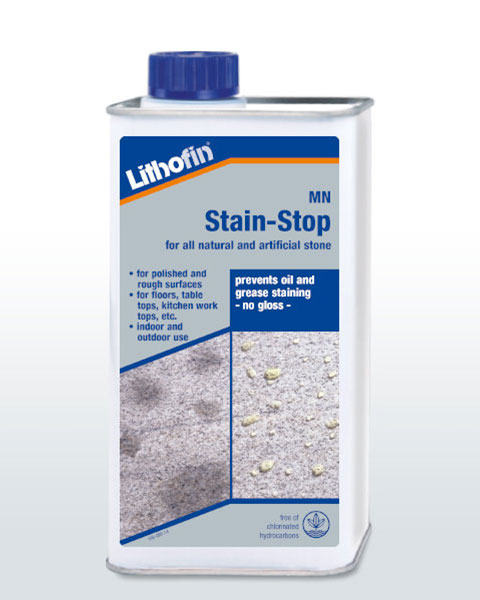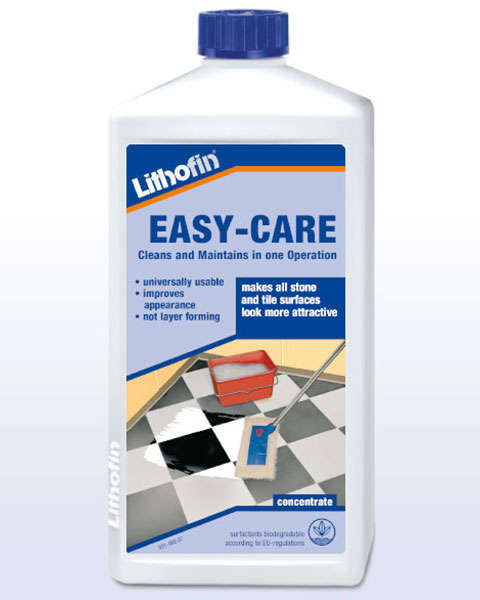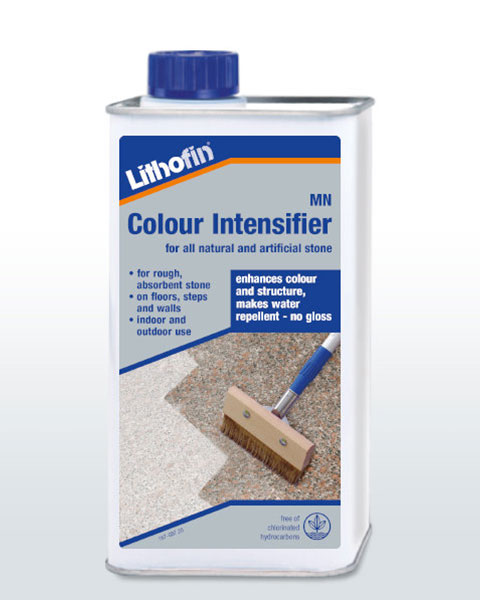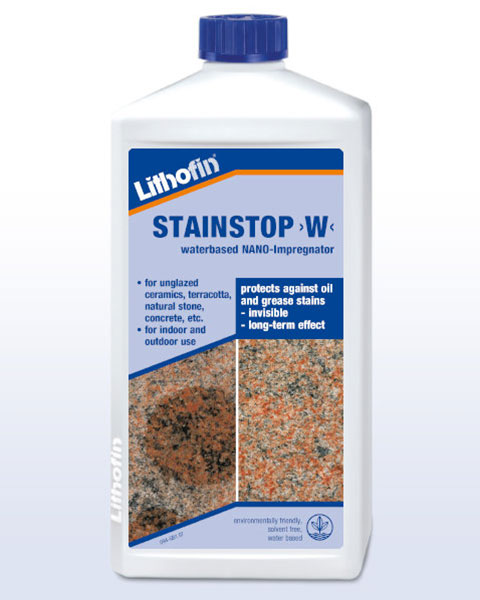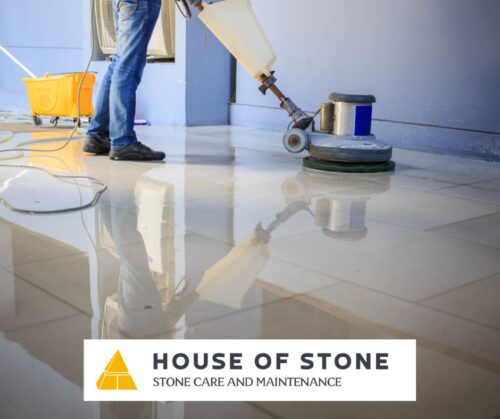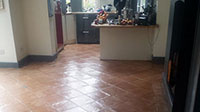Care & Maintenance of Polished Marble Floors
- Author House of Stone
- Categories: Care & Maintenance, Polished Marble Floors, Stain removal
Care & Maintenance of Polished Marble Floors
Marble is one of the most beautiful natural stones and it has been used since the earliest of times in the building and interior decoration. The exquisite colour variation and the unique veining that is a feature of marble have made it much sought after and appreciated by lovers of the finest quality. However, like all things of delicacy and beauty marble must be respected and treated with care and attention.
Marble is a medium hardness stone as measured on the ‘Moh’s Scale’ of hardness. It can be scratched relatively easily by grit on the soles of shoes or by sharp-edged objects being dragged across the surface. It is also quite porous and will easily absorb spilled liquids that can leave a stain. Also, as marble is a calcium-based stone, acidic substances such as wine or vinegar may react and leave an etch mark. Polished marble in particular is sensitive to mistreatment. Care must be taken to maintain the shine. Improper maintenance procedures and the use of unsuitable cleaning agents are the chief causes of polished marble losing its shine. Other environmental factors can also have an impact over time and eventually your beautiful marble floor, fireplace, worktop or table may need to be re-polished.
Maintaining marble floors requires some degree of effort but the amount depends on a number of factors. First and foremost is the level of foot traffic. If the floor is in a busy area such as a hallway it is likely that the surface will need regular polishing if the surface is to remain shiny. There are some practical measures that can be taken to limit everyday wear and tear. The most effective one is to remove outdoor shoes on entering the home and put on slippers or sandals. This is standard practice in Mediterranean and Arabic countries where marble flooring is commonplace but in more northerly countries, such as Ireland and the United Kingdom this is still more the exception than the rule. If removing shoes is not an option then placing a good quality fine bristle mat at room entrances is the next best thing. This will help catch small stones and grit on the soles of shoes and limit their transfer onto the surface of the marble. It is essential to regularly vacuum up the dust and grit from the mat and also from the marble floor itself.
The second most common cause of dulling and damaging polished marble floors is the use of unsuitable cleaning agents. Most off-the-shelf supermarket cleaners are either acid or alkaline-based. These create a chemical reaction with the calcium in the marble. Some of the stronger bathroom cleaners will in fact leave marks and etches that may require the intervention of a marble floor polishing specialist to remove. The simple rule is therefore not to use everyday household cleaners or detergents but rather to buy Neutral ph Natural Stone Cleaner. These are available at most of the larger homeware and DIY centers or from professional stone maintenance companies. They are generally supplied as a concentrate for dilution with water. A 10:1 mixture would be typical. Instead of mopping a lot of water onto the floor spray the mixture onto the surface and wipe it off with a damp cloth or mop. When the floor is dry
| BEFORE | AFTER |
 |
 |
Excess water merely washes dust into the grout which over time causes discoloration.
As mentioned previously, marble is calcium-based. Therefore, even mildly acidic liquids such as wine, vinegar, ketchup, soft drinks, and juices can etch the surface. The degree of etching is related to the length of time the liquid remains on the surface. Sometimes just a few minutes of contact is enough to do damage. So the rule is to wipe up all spills immediately.
It is recommended that marble is sealed every four or five years with a good quality natural stone sealer. But remember, sealers do not prevent stains and etch from occurring. They only limit the amount of damage that can occur by limiting the penetration of the liquid to the top layer of the marble.
So where should marble be installed as flooring? There is no simple answer to this question. It seems reasonable to suggest that a delicate, porous natural stone is not ideal for a high-traffic area or a busy kitchen. Many modern homes are open plan with kitchen, dining areas combined. In these situations, extra vigilance is required to avoid the problems mentioned earlier.
Nevertheless, in spite of the drawbacks marble still remains one of the most popular choices of the natural stone floor. It cannot be surpassed for sheer beauty, elegance, and character. Also, when weighing up the advantages and disadvantages of marble one should consider its special heat-conducting characteristics. It is cooling in hot weather and yet it retains heat for a long time compared to other types of flooring. For this reason, marble is particularly suitable for use with under-floor heating systems.
Marble floors add style and class to any interior space. But maintaining them in top condition may occasionally require the service of a specialist stone cleaning company. This may seem like an extra expense but bear in mind that the floor was probably expensive to install in the first place so spending some money to keep it in perfect condition makes good sense. At House of Stone, we have many years of experience in the care and maintenance of marble and natural stone. We would be happy to inspect your floor and provide free-of-charge advice and cost estimates to carry out the work.
Call us now on 01-8820002
Most Popular Products
You May Also Like
With its natural beauty and elegance, Marble is a popular…
Travertine is a form of limestone deposited by mineral springs….
Marble has been cherished for centuries for its elegance, timeless…
Terracotta is Italian for ‘baked earth’ or ‘baked clay’. Since…



